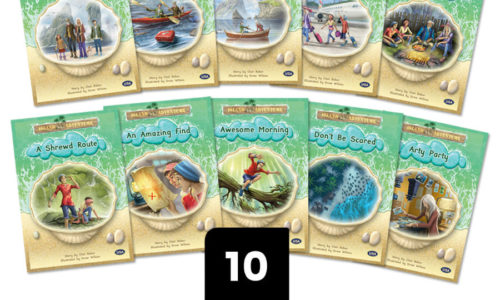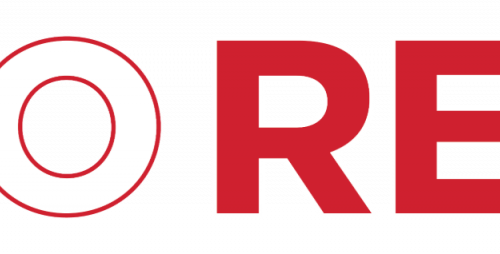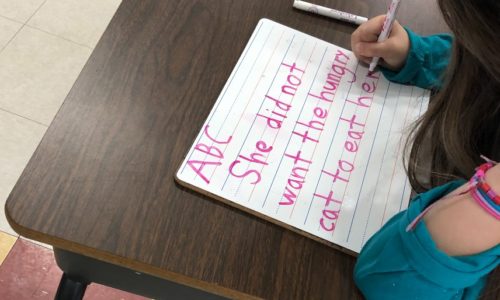The news has been spreading that Lucy Calkins, head of the Teachers College Reading and Writing Project (TCRWP), has been learning about the Science of Reading and making changes to her guidance and widely used curricula. Throughout her career, she has often characterized phonics as ‘low-level’ work that should be minimized and has promoted top-down…
Read MoreLearning to Read
Books to engage and motivate older, struggling readers

Older, struggling readers often have gaps in the their phonics knowledge. They find alternative spellings particularly confusing. Many suffer from low self-esteem so offering them decodable materials that are age-appropriate is vital. Vital because if the reading materials can engage the disaffected reader, his/her motivation to try and read will grow. Without motivation it is…
Read MorePhonic Books is Going Red for the Month of October!

What is all this ‘going red’ about? Go Red is a community of passionate individuals and organizations that campaign to promote literacy and a greater understanding of dyslexia. Being able to read and write is something most of us take for granted. Dyslexia Awareness Month shines a light on the 1 in 10 children who…
Read MoreLittle things can make a big difference

The education researcher Dylan Wiliam has said, “changing what teachers do is more important than changing what teachers know.” But isn’t knowledge power? And what we do is obviously linked to what we know. So, how can that be? In the past few years, there has been a groundswell of interest in the science of…
Read MoreParents steers school toward Science of Reading
It is so sad when children grow to hate reading as described in the interview linked at the end of this piece. It is uplifting to hear how a parent turned this child’s life around by getting him assessed and starting him on a structured literacy program. But what about less informed or well-to-do parents? How…
Read MoreConsonant blends and consonant teams—what’s the difference?
Many of the terms in phonics are quite confusing. Consonant blends and consonant teams are such terms. So, what is the difference between the two? A consonant blend is a term used for two adjacent consonants in a word that represent two separate sounds. Take the word, ‘blog’: the letters ‘b’ and ‘l’ spell two…
Read MoreWhy we need to teach the Alphabetic Code
What is the Alphabetic Code? English has a complex writing system. It has 26 letters but roughly 44 sounds (this depends on pronunciation). There are roughly 160+ different spellings for these 44 sounds. In order to teach them in a methodical way, they have been organized according to the 44 sounds they spell. This organization…
Read MoreDictation is a great activity for emerging spellers
Most teachers approach teaching in a child-centered way so dictation goes against the grain. It may seem old-fashioned and yes, a bit dictatorial. But actually, it is a really powerful tool which is particularly useful for struggling or emerging readers and spellers. What more, kids enjoy it because it consolidates their learning and they experience…
Read MoreThe conveyor belt from reading difficulties to prison
Emily Hanford’s most recent podcast, an audio documentary called What Words Say, is a must listen. Hanford explains how reading difficulties often find expression in bad behavior, and she points out that children of color who struggle with reading don’t typically get the help that white children do. Almost all the kids in the…
Read MoreHow we can help kids to self-teach themselves to read
Have you ever wondered how kids can read words they haven’t been taught to read? I recently came across the ‘Self Teaching Hypothesis’ Share, 1955. This hypothesis explains how kids use the sounds/spellings they have been taught and apply them to figure out new words. What does this theory say? “According to this hypothesis, beginning…
Read More
